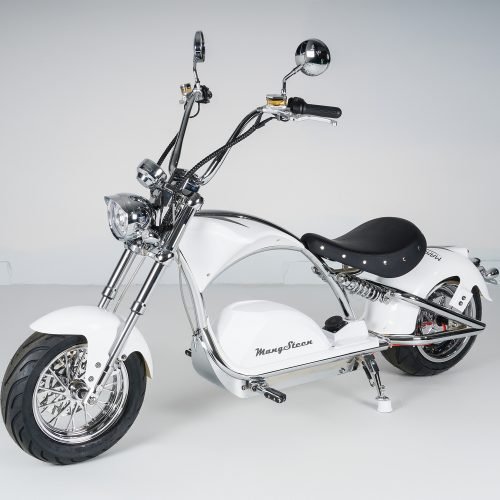Electric scooters (e-scooters) and electric mopeds (e-mopeds) are both electric two-wheeled vehicles, but they differ in several important aspects, including design, functionality, speed, and regulatory classification. Below are the main differences between e-scooters and e-mopeds:
Design and Construction
E-Scooters: E-scooters: Compact and lightweight designs are common. They usually feature a standing platform, handlebars, and small wheels.
E-mopeds: E-mopeds are similar to traditional gas-powered mopeds. It has a sturdier frame, a seat for the rider, and may have storage space.
Seating arrangement:
E-Scooter: E-scooters are designed for standing and are operated with the rider standing on a platform. Some models may have a small seat, but it is generally intended for short standing rides.
E-mopeds: E-mopeds have a built-in seat that allows the rider to sit and operate the machine. The seat makes them suitable for longer rides.
Speed and Power:
E-Scooters: E-scooters are typically slower than E-mopeds. They are designed for short distance commuting, usually at moderate speeds of 15 to 20 mph (24 to 32 km/h).
E-mopeds: E-mopeds are generally more powerful and capable of higher speeds. Depending on local regulations, they can reach speeds of 30 mph (48 km/h) or more.
Regulatory Classification:
E-Scooters: E-scooters are often classified as “low-speed electric scooters” and may be subject to specific regulations that vary by jurisdiction. They are generally allowed on bike paths and sidewalks, but regulations vary by location.
E-mopeds: E-mopeds are often classified as motorized vehicles and may require registration, licensing, and insurance in some jurisdictions.
Range and battery size:
E-scooters: E-scooters generally have smaller batteries, resulting in a shorter range. They are suitable for short distances and may require frequent recharging.
E-mopeds: E-mopeds generally have larger batteries and can travel longer distances on a single charge. As a result, they are suitable for daily commuting and longer rides.
Intended Use
Lorem ipsum dolor sit amet, consectetur adipiscing elit. Ut elit tellus, luctus nec ullamcorper mattis, pulvinar dapibus leo.
E-scooters: E-scooters are designed for short, last-mile trips. They are popular for urban commuting and are often available for rent through scooter sharing services.
E-mopeds: E-mopeds are designed for long-distance commuting and can be used as a primary mode of transportation. They are suitable for riders seeking a more comfortable seating position.
When choosing between an e-scooter and an e-moped, consider factors such as intended use, local regulations, required speed, and whether you will be standing or sitting while riding. In addition, be aware of specific regulations governing the use of electric two-wheeled vehicles in your area.






